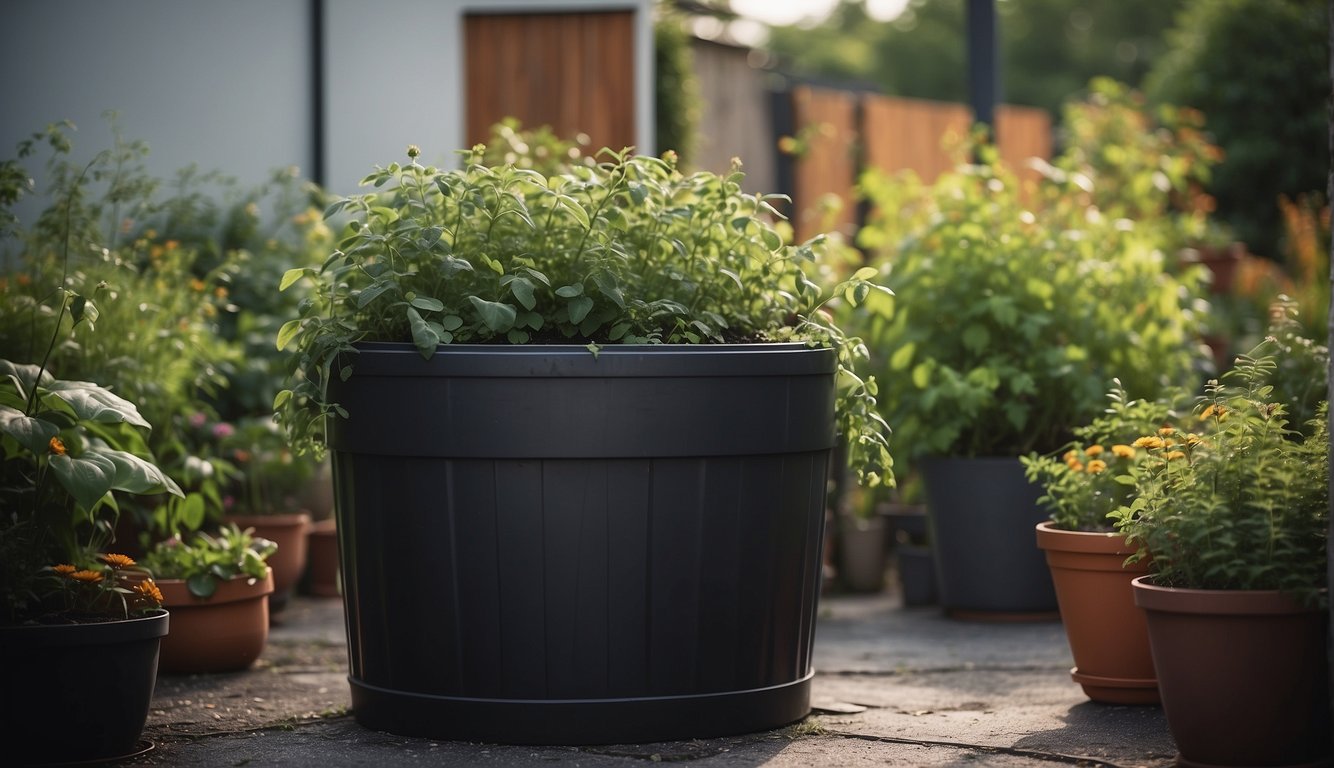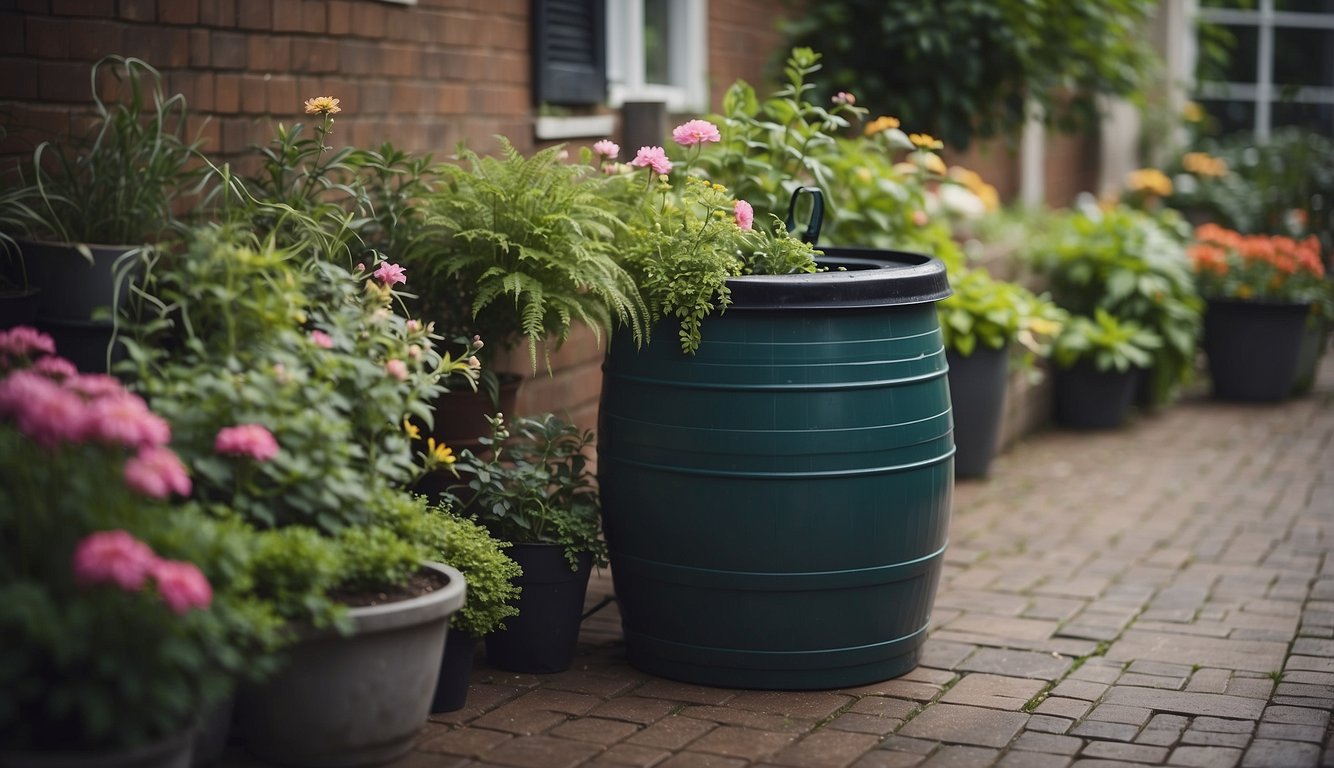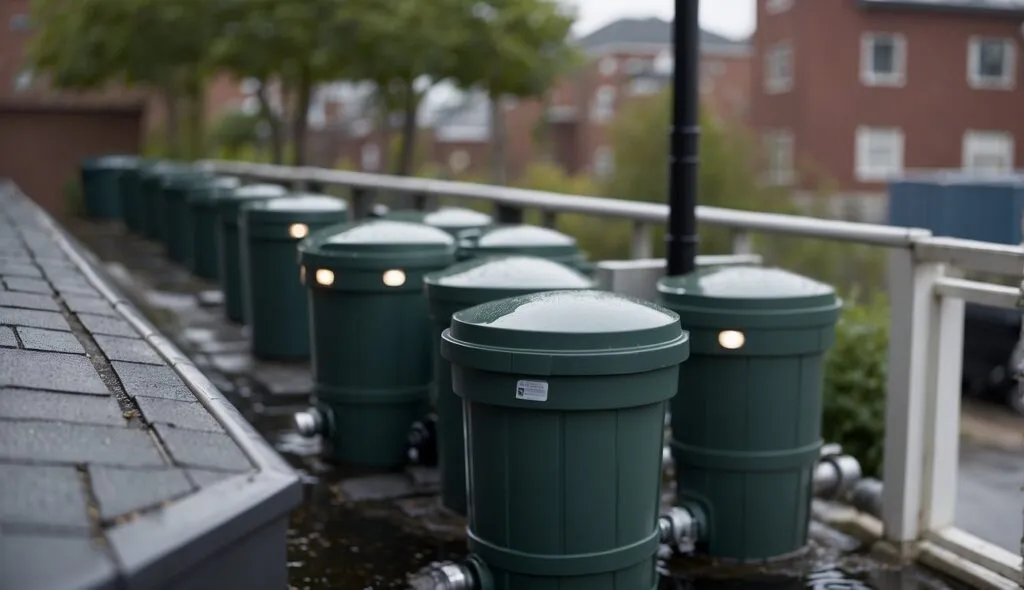Urban gardening is becoming increasingly popular as people look for ways to live more sustainably and grow their own food. One aspect of urban gardening that is gaining traction is rain barrel gardening. Rain barrels are a simple and eco-friendly way to collect and store rainwater for use in your garden. In this article, we will explore some urban rain barrel gardening ideas to help you get started on your own sustainable garden.

Understanding rain barrels is the first step to setting up your own rain barrel garden. Rain barrels are large containers that collect and store rainwater from your roof. They are typically made of plastic or metal and come in a variety of sizes. Once you have a rain barrel, you can use the collected water to water your plants, wash your car, or even flush your toilet. By using rainwater instead of tap water, you can save money on your water bill and reduce your environmental impact.
Table of Contents
Key Takeaways:
- Rain barrel gardening is an eco-friendly way to collect and store rainwater for use in your garden.
- Understanding rain barrels is the first step to setting up your own rain barrel garden.
- By using rainwater instead of tap water, you can save money on your water bill and reduce your environmental impact.
Understanding Rain Barrels
Rain barrels are an essential part of sustainable gardening. They are simple and cost-effective solutions for reducing water bills, conserving water, and minimizing stormwater runoff. In this section, we will discuss the different types of rain barrels, the benefits of rainwater collection, and the components of a rain barrel system.
Types of Rain Barrels
Rain barrels come in different shapes, sizes, and materials. The most common types of rain barrels are plastic, wine barrel, and metal. Plastic rain barrels are the most popular due to their affordability, durability, and lightweight. Wine barrel rain barrels are aesthetically pleasing and can add a rustic touch to your garden. Metal rain barrels are durable and can last for many years.
Benefits of Rainwater Collection
Rainwater collection has numerous benefits for the environment and your garden. By collecting rainwater, you can reduce stormwater runoff, which can cause erosion, flooding, and water pollution. You can also conserve water and reduce your water bills by using rainwater for your garden and household needs. Rainwater is also better for your plants than tap water since it doesn’t contain chlorine, fluoride, or other chemicals.
Components of a Rain Barrel System
A rain barrel system consists of several components, including a spigot, diverter, hose, screen, and stand. The spigot is used to access the water stored in the rain barrel. The diverter is used to direct the water from the downspout into the rain barrel. The hose is used to connect the rain barrel to your garden or household needs. The screen is used to filter out debris and prevent mosquitoes from breeding in the rain barrel. The stand is used to elevate the rain barrel and provide better water pressure.
In conclusion, rain barrels are an essential component of sustainable gardening. They are easy to install, cost-effective, and have numerous benefits for the environment and your garden. By understanding the different types of rain barrels, the benefits of rainwater collection, and the components of a rain barrel system, we can make informed decisions about how to conserve water and reduce our environmental impact.
Setting Up Your Rain Barrel
When it comes to setting up your rain barrel, there are a few things to consider. In this section, we will cover the most important aspects of setting up your rain barrel, including choosing the right location, the installation process, and maintaining your rain barrel.
Choosing the Right Location
The first step in setting up your rain barrel is choosing the right location. You want to choose a location that is close to your garden or landscape, as this will make it easier to use the water you collect. Additionally, you want to choose a location that is close to a downspout diverter, as this will make it easier to install your rain barrel system.
Installation Process
Once you have chosen the right location for your rain barrel, it’s time to start the installation process. The installation process will vary depending on the type of rain barrel system you choose to use. However, there are a few general steps you can follow to ensure a successful installation.
First, you will need to prepare your rain gutters by cleaning them out and sealing any leaks. Next, you will need to install a downspout diverter to direct rainwater into your rain barrel. You will also need to drill a hole in the top of your rain barrel and install a spigot for easy access to the water.
Maintaining Your Rain Barrel
Once your rain barrel is installed, it’s important to maintain it properly to ensure it continues to function effectively. This includes regularly checking for sediment buildup and algae growth, and cleaning your rain barrel as needed to keep the water clean and free of contaminants.
Overall, setting up a rain barrel system can be a great DIY project for anyone looking to save water and reduce their environmental impact. With the right tools and a little bit of know-how, you can easily set up your own rain barrel system and start collecting clean water for your garden or landscape.
Water Collection and Usage
When it comes to urban rain barrel gardening, water collection and usage are essential components. Here are some efficient water collection techniques and ways to utilize the collected rainwater.
Efficient Water Collection Techniques
One of the most efficient ways to collect rainwater is by using a rain barrel. By placing a rain barrel under a downspout, we can collect runoff from the roof and use it for watering plants, lawns, and gardens. This can help us save on our water bill and reduce stormwater runoff.
Another technique for efficient water collection is using a drip irrigation system. Drip irrigation delivers water directly to the roots of plants, reducing water waste and evaporation. This can help us conserve water and reduce our water bill.
Utilizing Collected Rainwater
Once we have collected rainwater, there are several ways we can utilize it. One way is by using it for irrigation. By using collected rainwater for watering plants, we can reduce our water bill and conserve water. We can also use collected rainwater for lawn and garden irrigation.
Another way to utilize collected rainwater is by using it for non-potable uses such as flushing toilets or washing cars. This can help us further reduce our water bill and conserve water.
In summary, collecting rainwater is an efficient way to conserve water and reduce our water bill. By utilizing collected rainwater for irrigation and non-potable uses, we can further reduce our water usage and save money.
Environmental Impact and Sustainability

Reducing Water Waste
One of the main benefits of using rain barrels for urban gardening is the reduction of water waste. According to the Environmental Protection Agency (EPA), household water use can be reduced by up to 40% during the summer months by using rain barrels. This means that not only can we save money on our water bills, but we can also conserve precious resources during times of drought.
By collecting free water from rainfall, we can reduce the amount of water that is wasted by allowing it to run off into storm drains. This not only saves water but also reduces the amount of energy required to treat and pump water to our homes.
Promoting Eco-Friendly Practices
Rain barrel gardening also promotes environmentally friendly and sustainable practices. By using rain barrels, we can reduce our reliance on municipal water supplies, which are often treated with chemicals that can be harmful to the environment.
Additionally, rain barrel gardening can help to reduce the amount of water that is needed to maintain a healthy garden. By using water from rain barrels, we can reduce the demand for water from municipal supplies, which can help to conserve resources and protect the environment.
Overall, rain barrel gardening is a simple and effective way to reduce water waste, save money on our water bills, and promote eco-friendly and sustainable practices. By using free water from rainfall, we can reduce our impact on the environment and help to conserve precious resources for future generations.
Conclusion

In conclusion, urban rain barrel gardening is a highly practical and sustainable solution for gardening enthusiasts who want to conserve water and reduce their water bills during peak summer months. By collecting rainwater in beautiful rain barrels, we can ensure that our summer garden remains healthy and vibrant even during dry spells.
Moreover, using rainwater for watering plants and washing the car is not only eco-friendly but also cost-effective. We can also use the collected rainwater for other outdoor activities such as cleaning outdoor tools and equipment, and even watering pets and wildlife.
Overall, rain barrel gardening is a great way to promote sustainable living and reduce our carbon footprint. With the right setup and maintenance, we can enjoy a lush and thriving summer garden while doing our part for the environment.
Frequently Asked Questions
How can we integrate rain barrels into our urban gardening space?
Rain barrels can be easily integrated into an urban garden space by placing them near the downspouts of your home’s gutters. This allows the rainwater collected from the roof to be redirected and stored in the rain barrel. The stored water can then be used to water plants in the garden. Make sure to elevate the rain barrel on a stand to create enough pressure for the water to flow through a hose or watering can.
What are some creative ways to decorate rain barrels for a city garden?
Decorating rain barrels can add a personal touch to your urban garden. Some creative ways to decorate rain barrels include painting them with bright colors or patterns, wrapping them in decorative vinyl, or using stencils to add designs. You can also add plants, such as succulents or vines, to the top of the rain barrel to create a living roof.
Which plants thrive best using water from rain barrels?
Most plants will thrive with water from rain barrels, as it is free of chemicals and minerals found in tap water. However, plants that are native to the region and are drought-resistant will do particularly well. Examples of such plants include succulents, herbs like rosemary and thyme, and vegetables like tomatoes and peppers.
How do we calculate the number of rain barrels required for our urban garden?
The number of rain barrels required for your urban garden depends on the size of your garden and the amount of rainfall in your area. A general rule of thumb is to have one rain barrel for every 100 square feet of garden space. You can also use a rain barrel calculator to estimate the number of barrels needed based on your roof size and average rainfall.
What are the best practices for maintaining a rain barrel system in a small garden?
To maintain a rain barrel system in a small garden, it is important to keep the barrel clean and free of debris. Regularly check the barrel’s screen or filter to prevent clogging and remove any standing water to prevent mosquito breeding. Additionally, it is recommended to empty and clean the barrel at least once a year to prevent the buildup of sediment and bacteria.
Can you suggest any DIY rain barrel designs suitable for tight urban spaces?
There are many DIY rain barrel designs that are suitable for tight urban spaces. One option is to use a smaller container, such as a trash can or plastic drum, and place it on a sturdy stand. Another option is to build a vertical rain garden using PVC pipes and containers. This design allows for multiple plants to be grown in a small space while also collecting rainwater.


